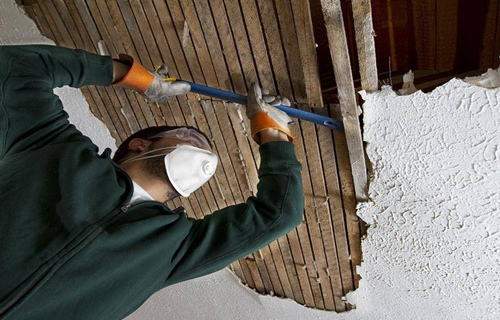What to Do If You Accidentally Disturbed Asbestos during the Course of a DIY Project

Asbestos was a highly popular material before it was regulated under state and federal law, which is why it can be found in a wide range of products and places including cement roofing, electrical boards, underneath carpet or vinyl flooring, gutters and downpipes, and fencing.
Inhaling asbestos fibers may result in lung scarring and shortness of breath, which is why when remodeling or repairing an older building, you must take every precaution to ensure that no asbestos fibers are released into the environment as a result of your efforts. In case of any disturbance to the asbestos material, or if you simply want peace of mind, you have several options, including fixing or removing the problem.
Understanding a Few Basic Concepts about Asbestos-Containing Products in Your House
Until the 1970s, asbestos was extensively utilized in home buildings as a very effective and affordable fire-retardant material and thermal and acoustic insulator. It may also be found in a variety of different building materials, such as:
- Insulation (vermiculite)
- Shingles
- Old cement siding
- 9"x9" floor tiles
- Acoustic ceiling tiles
- White tape on heating ducts
- Insulation on boiler pipes and boilers
- Popcorn ceiling texture
- Glues used under flooring
Is the asbestos product friable or non-friable? This is an essential concept to grasp since it tells you how stable the asbestos is. Non-friable asbestos-containing materials such as cement sheeting, cladding, and gutters are assumed to be stable and remain stable for as long as they are not disturbed. Friable materials, such as insulation or texturing ceilings, provide a greater danger of crumbling and turning to dust.
Precautions to Consider If You Believe You May Have Disturbed Asbestos as a Result of a Home Renovation Project
When asbestos materials are damaged, microscopic fibers are released into the air, which may cause serious and often deadly illnesses if inhaled. If you believe you have inadvertently disturbed asbestos materials, the following actions can help protect your health:
- Leave it as it is. If you come across asbestos, do not drill through it, cut it, shatter it, hammer it, or otherwise disturb it.
- Prevent the spread of asbestos. Using damp rags, wipe yourself down - damping down dust prevents the fibers from becoming airborne. Never dry brush or rub down with your hands since this will release light asbestos fibers into the air, increasing the likelihood of inhaling them.
- Prevent access to the area. Inform anybody nearby of the incident and evacuate the room or portion of the house in which the fibers may be present. The area should be sealed off, and a warning sign indicating "potential asbestos contamination" should be displayed.
- Prevent drafts. Close off any escape routes, such as windows, air ducts and vents, and tape bottoms of doors.
- Keep the respirator on until all contaminated clothes have been removed, bagged, and sealed, then dispose of the respirator by double bagging it. Don't keep disposable protective equipment, and don't shake the dust out of overalls or clean items with a vacuum cleaner.
- Don't take risks. If you detect the presence of asbestos in a particular area in your home, it is far safer to ask an accredited asbestos professional to remove asbestos-containing material from your home, as they are fully equipped and qualified to perform this work safely.
Get Professional Help
If any asbestos-containing material was disturbed during the remodeling process, you should contact a certified asbestos inspection and testing firm for assistance. Asbestos inspectors may evaluate your property, analyze samples from questionable materials, and recommend the next steps. You can also read our guide to stay informed about DIY and asbestos risks.
